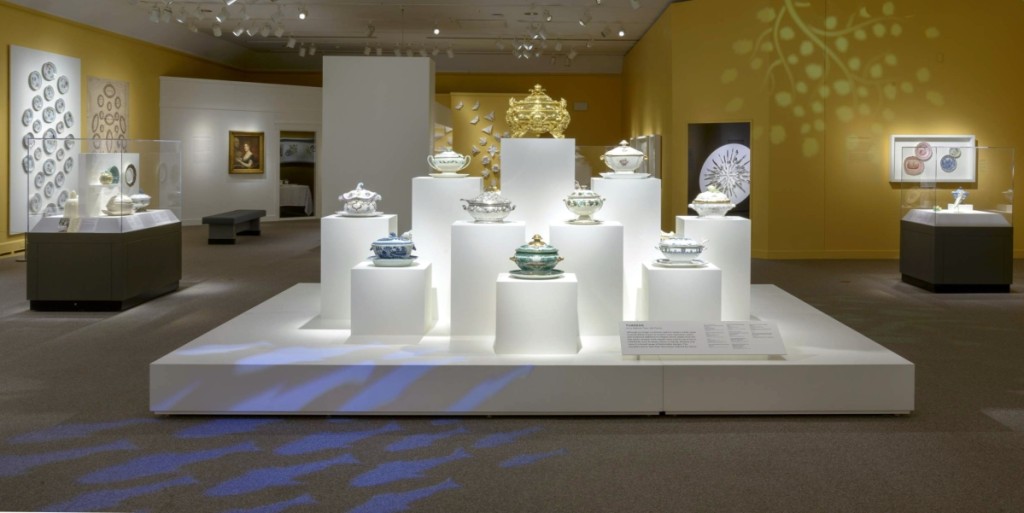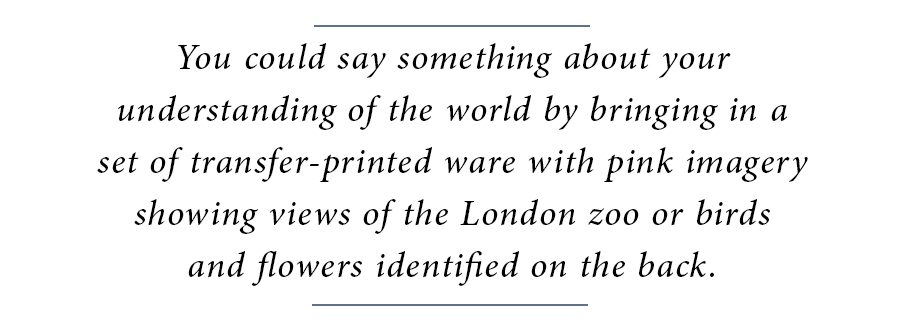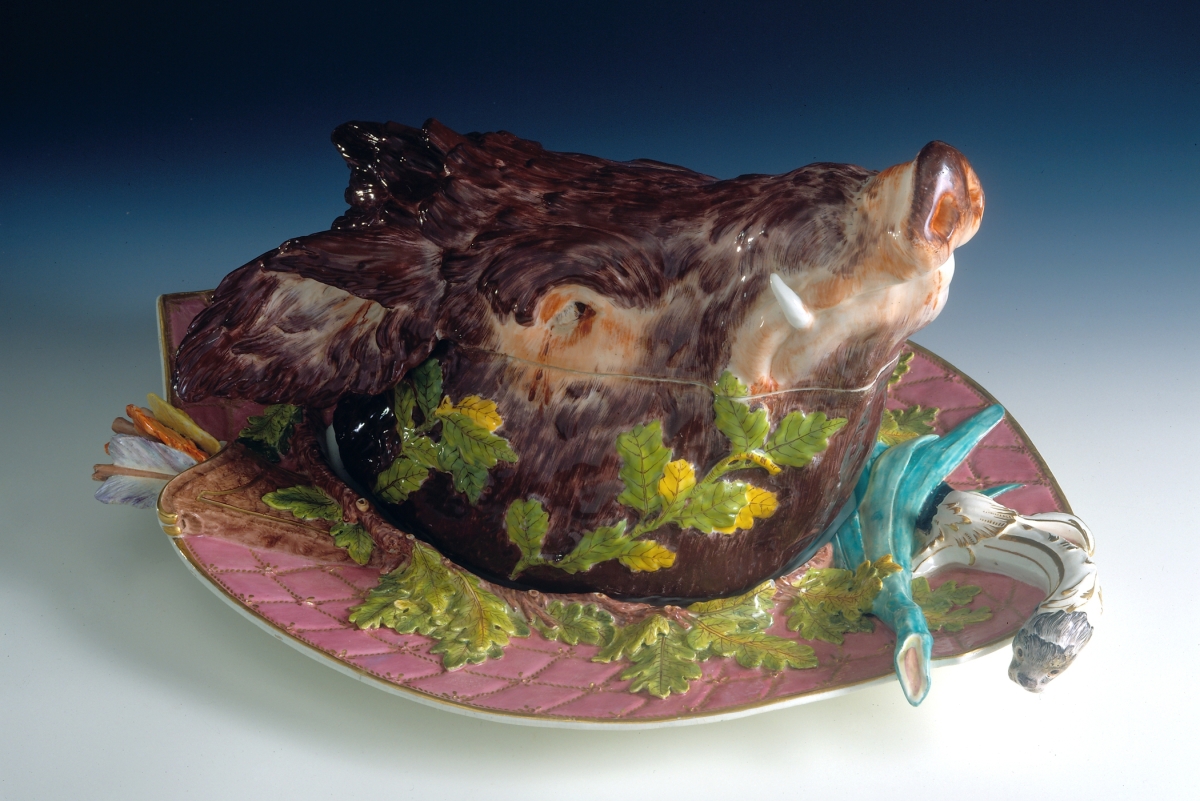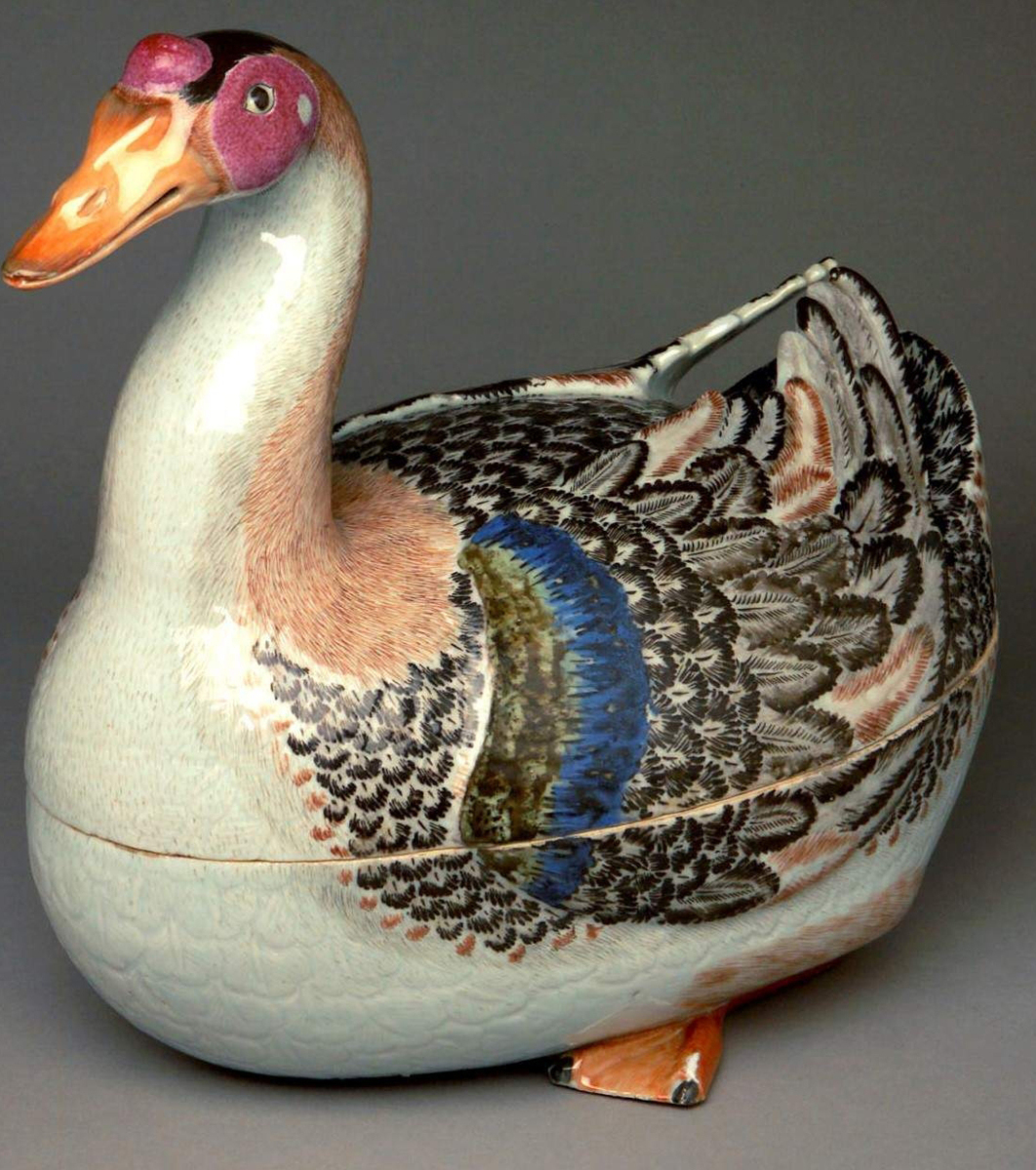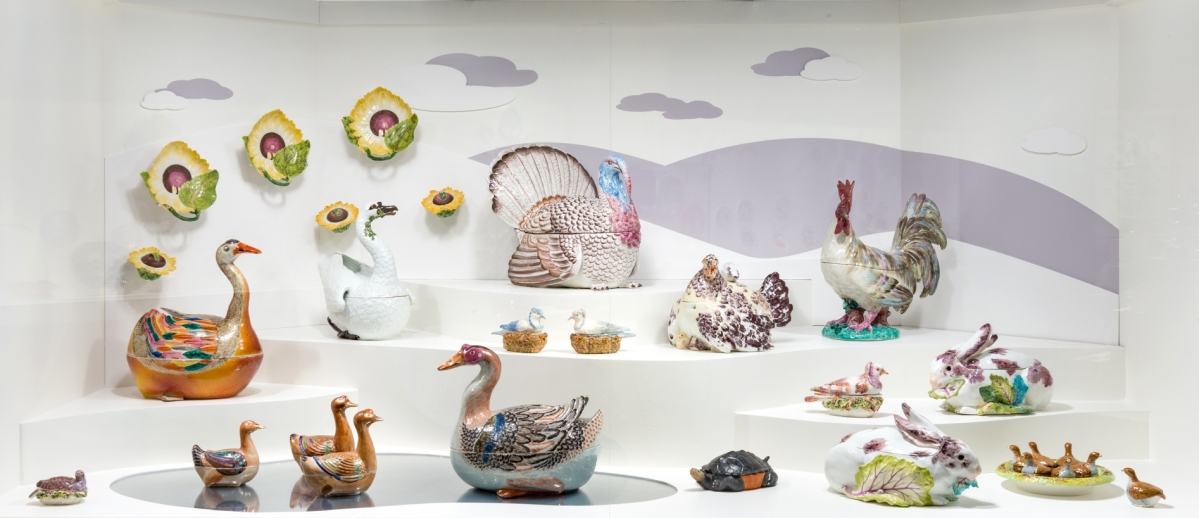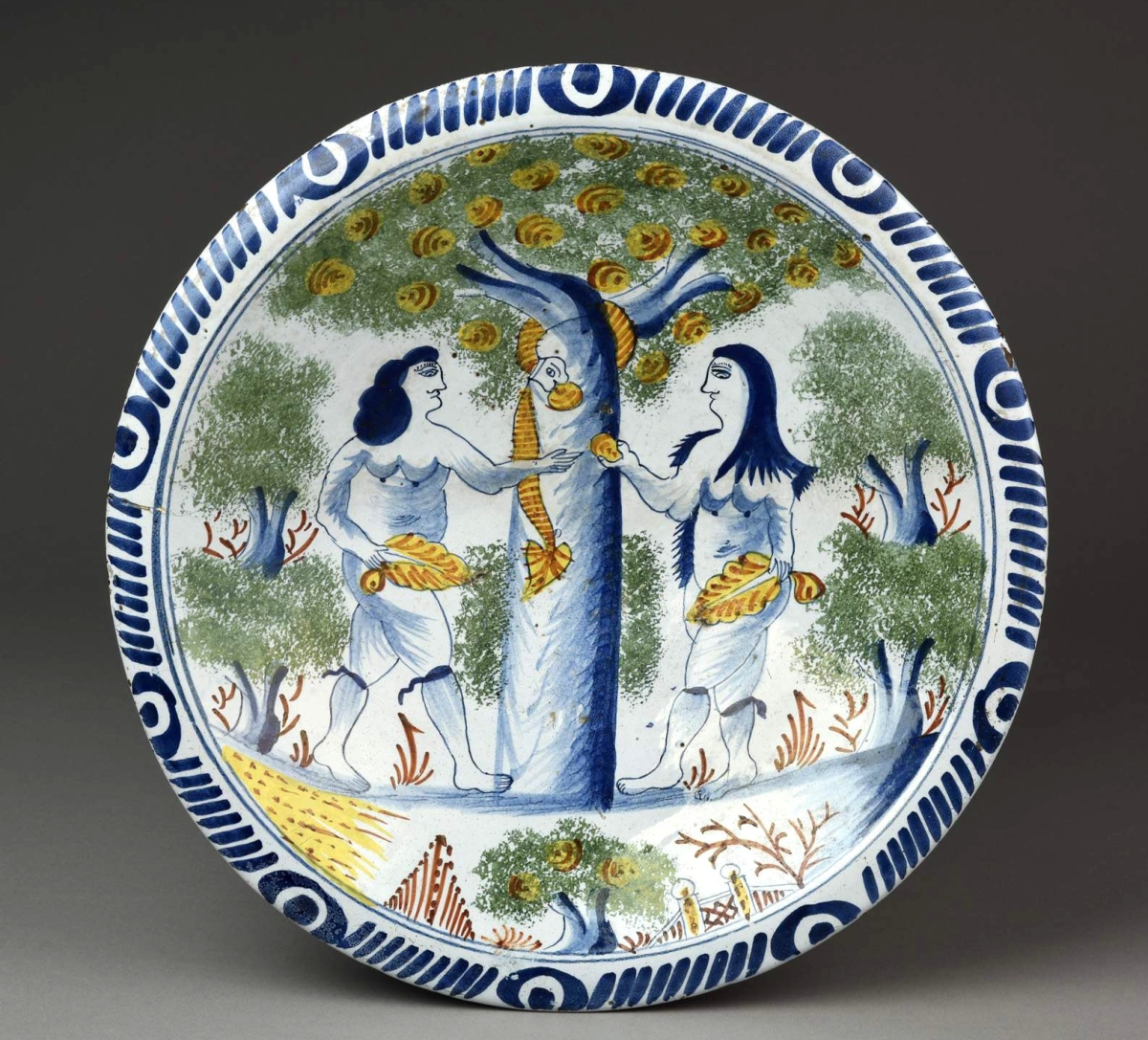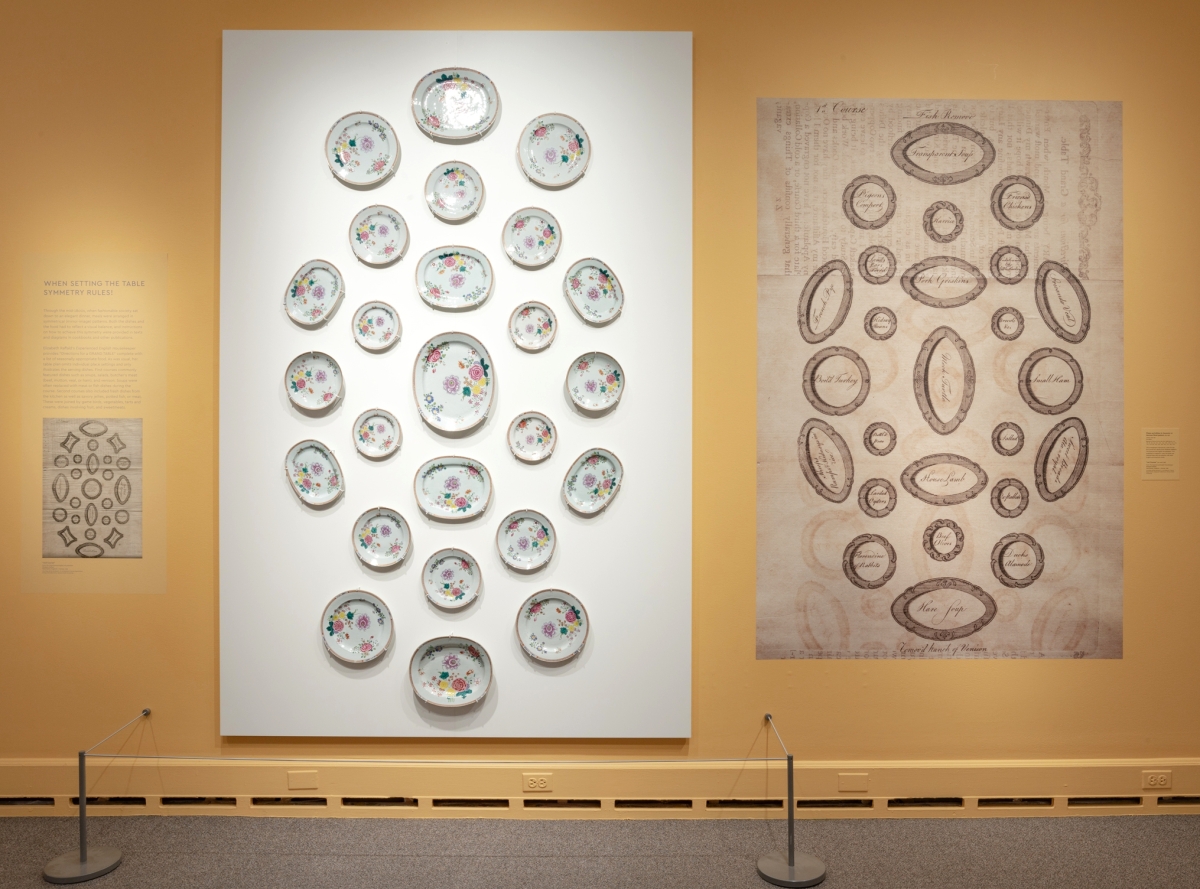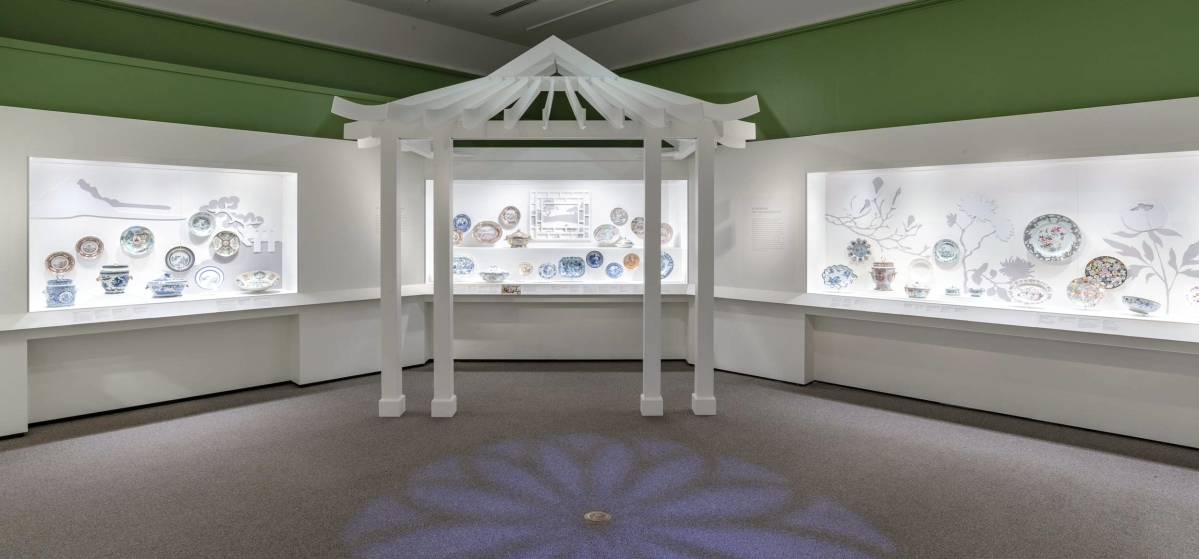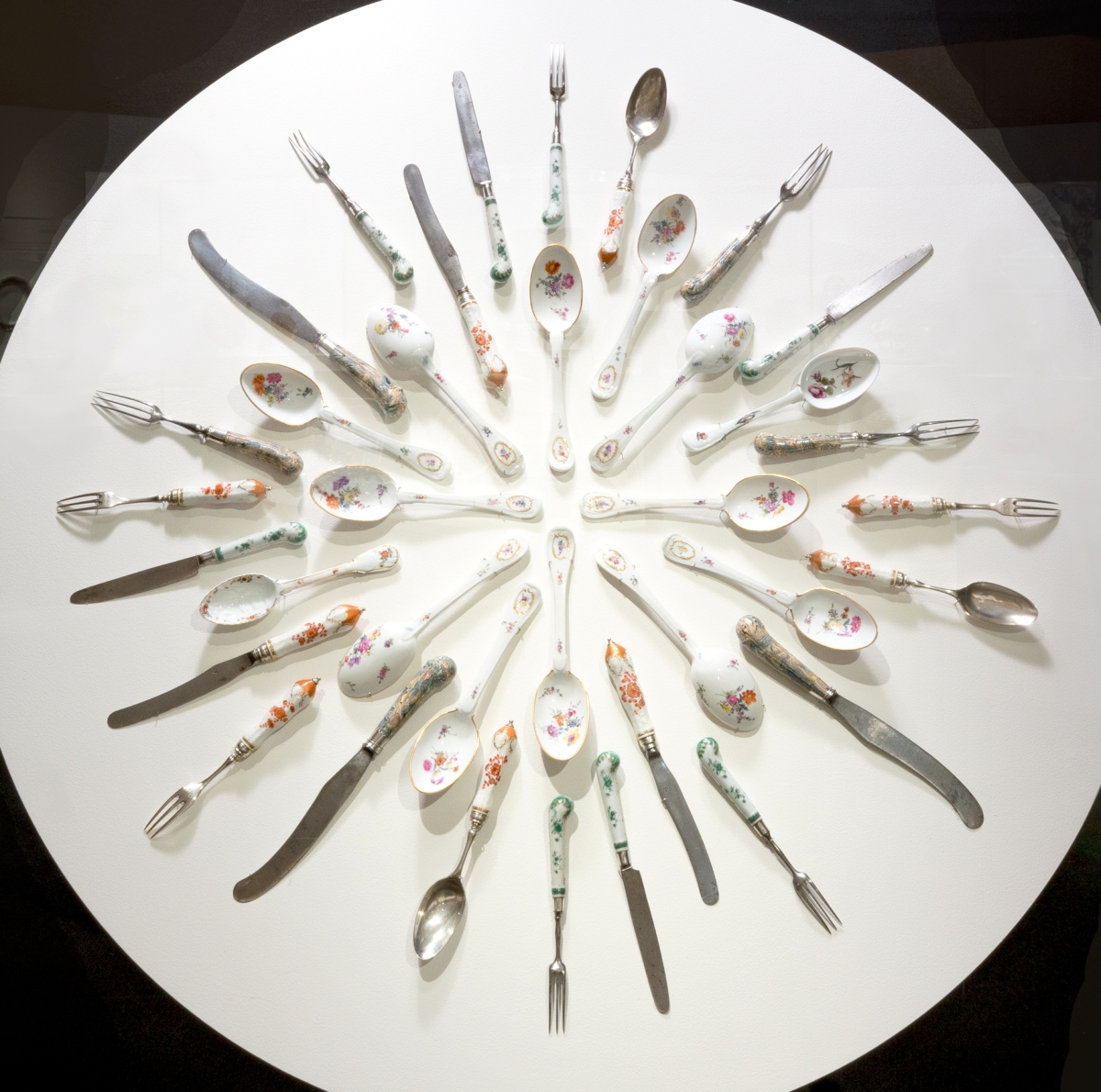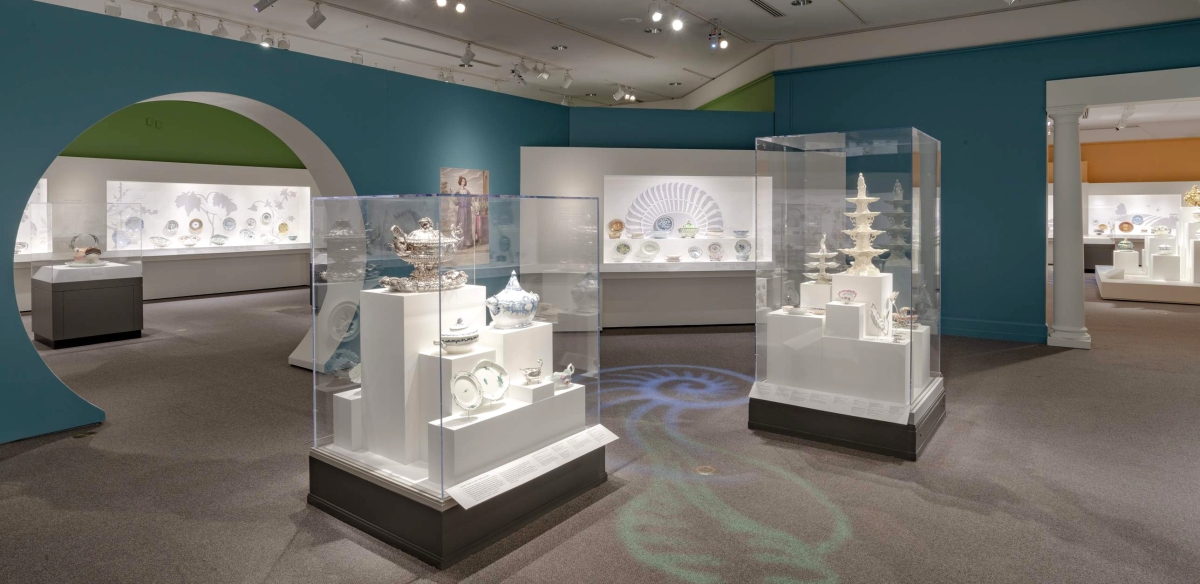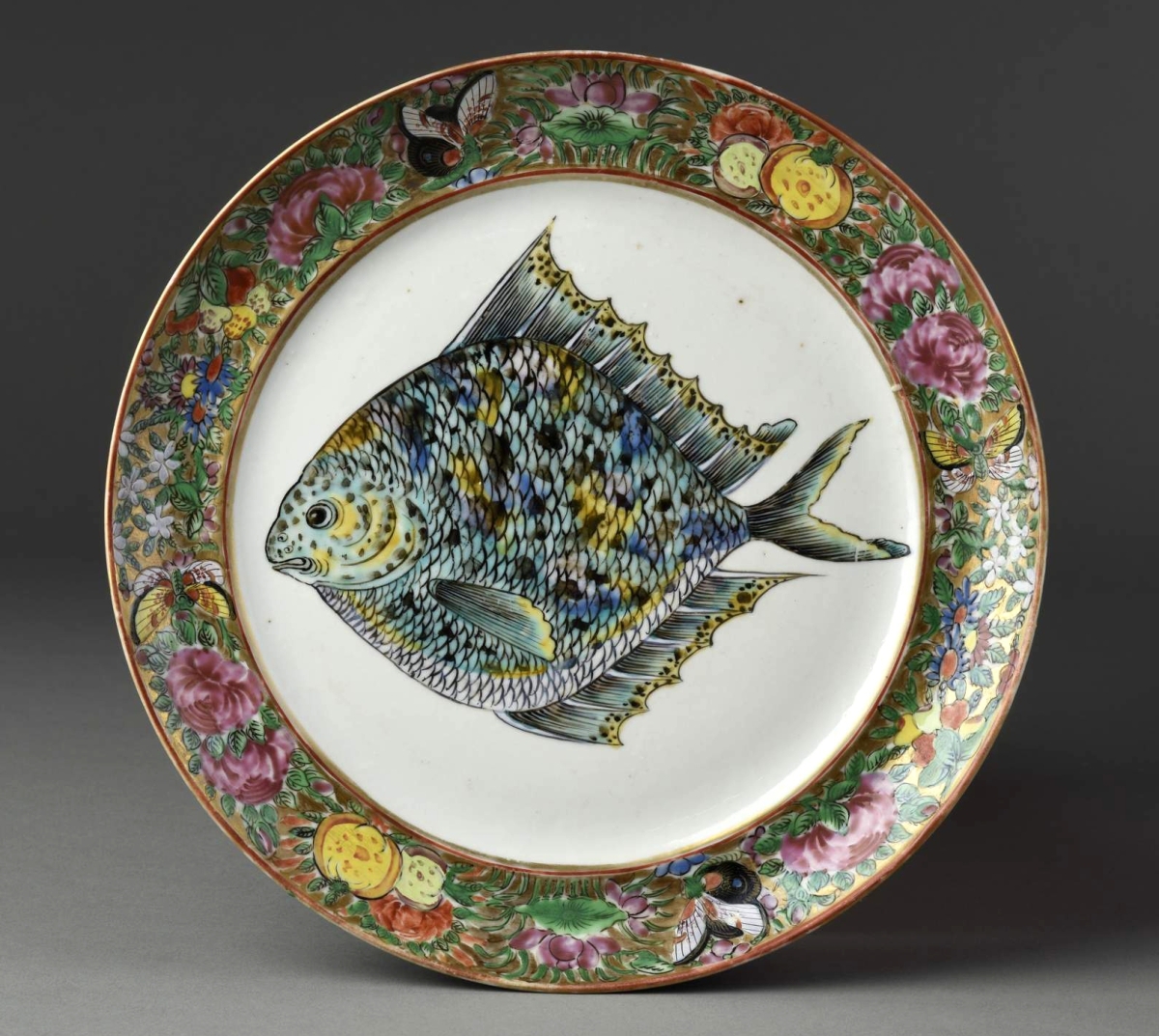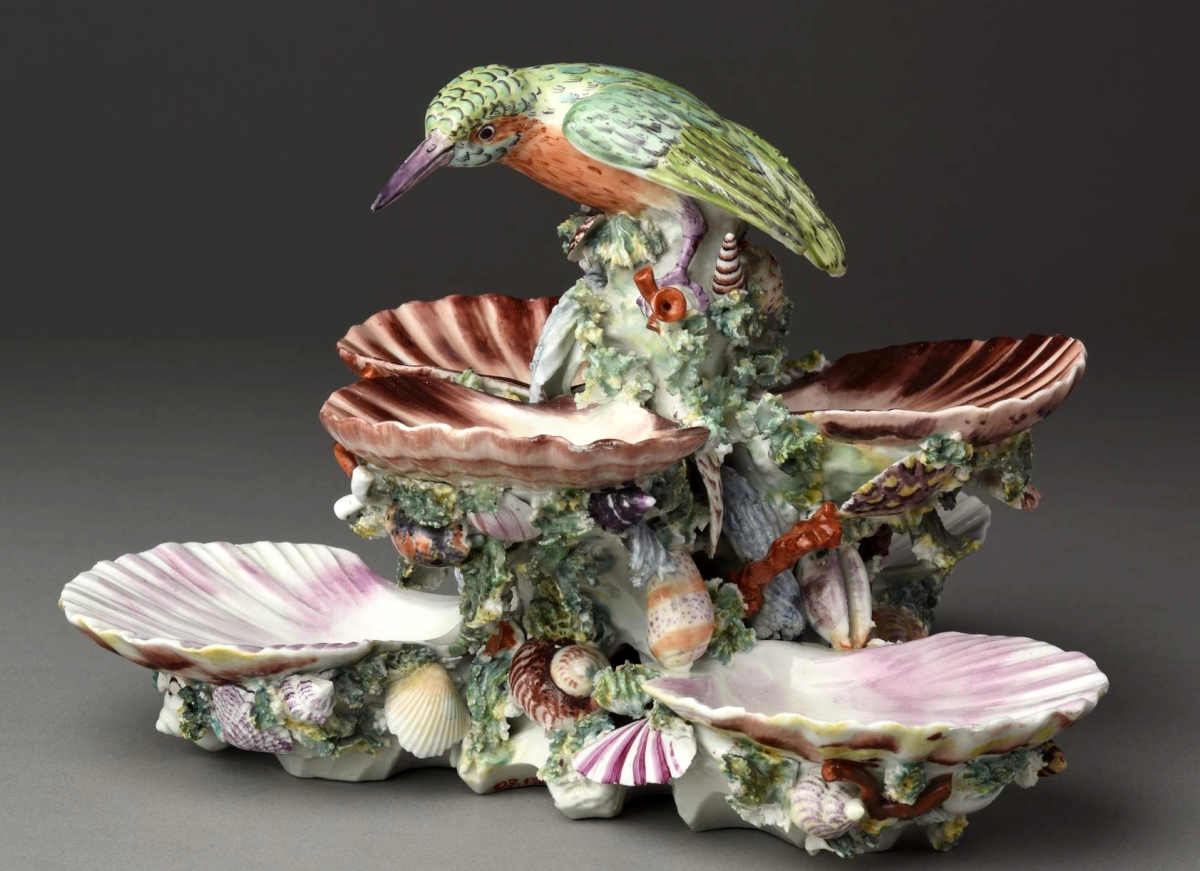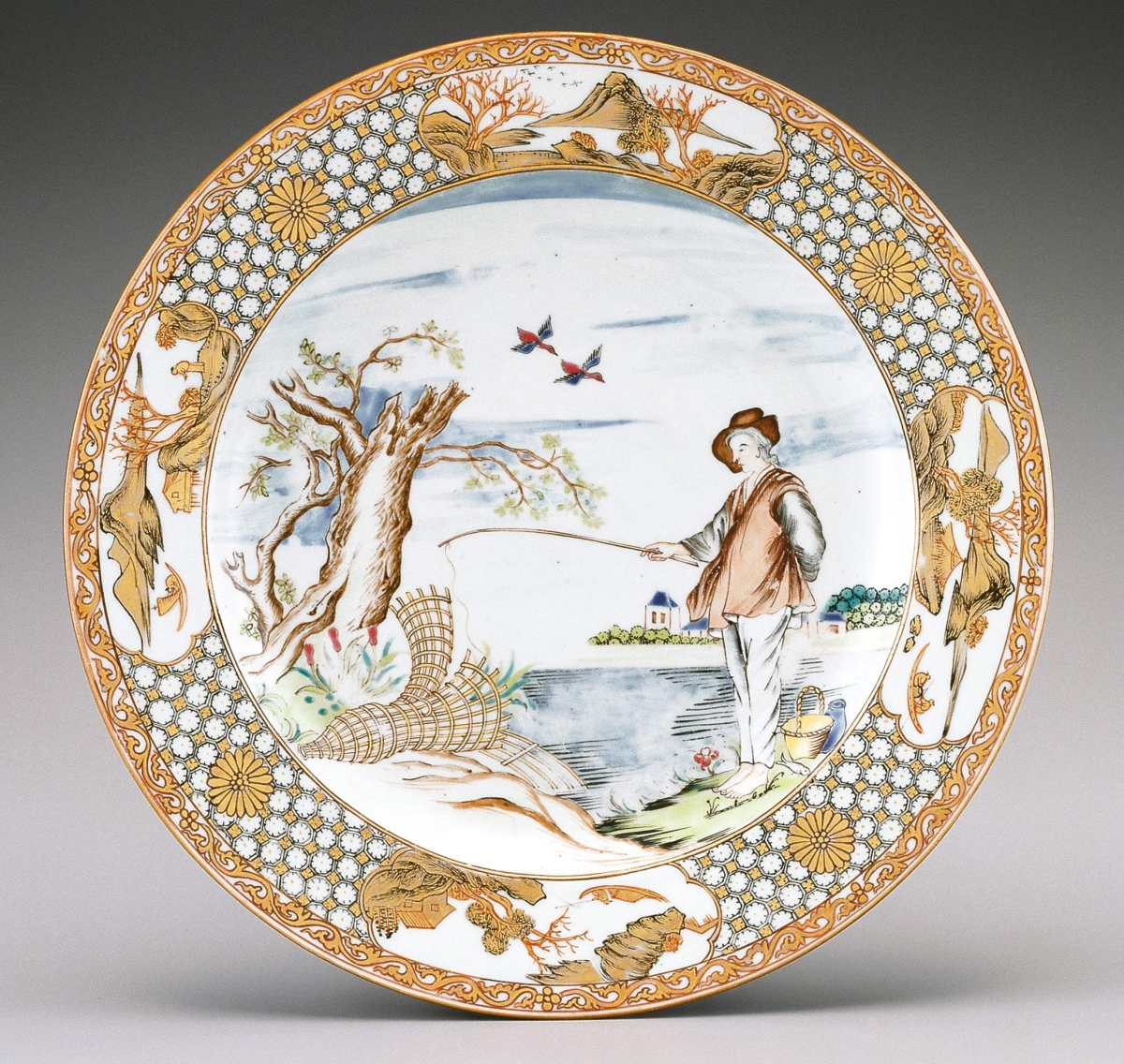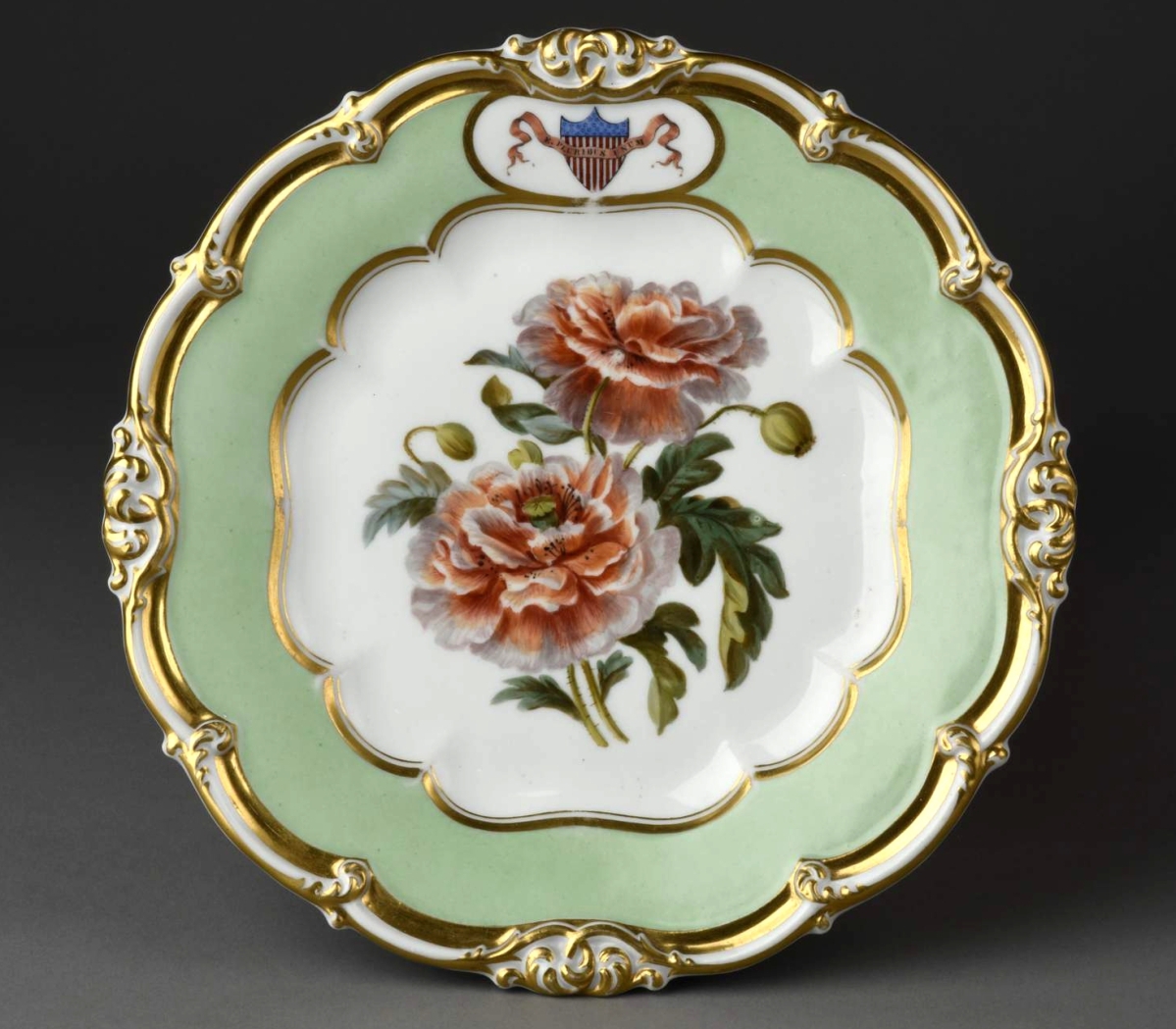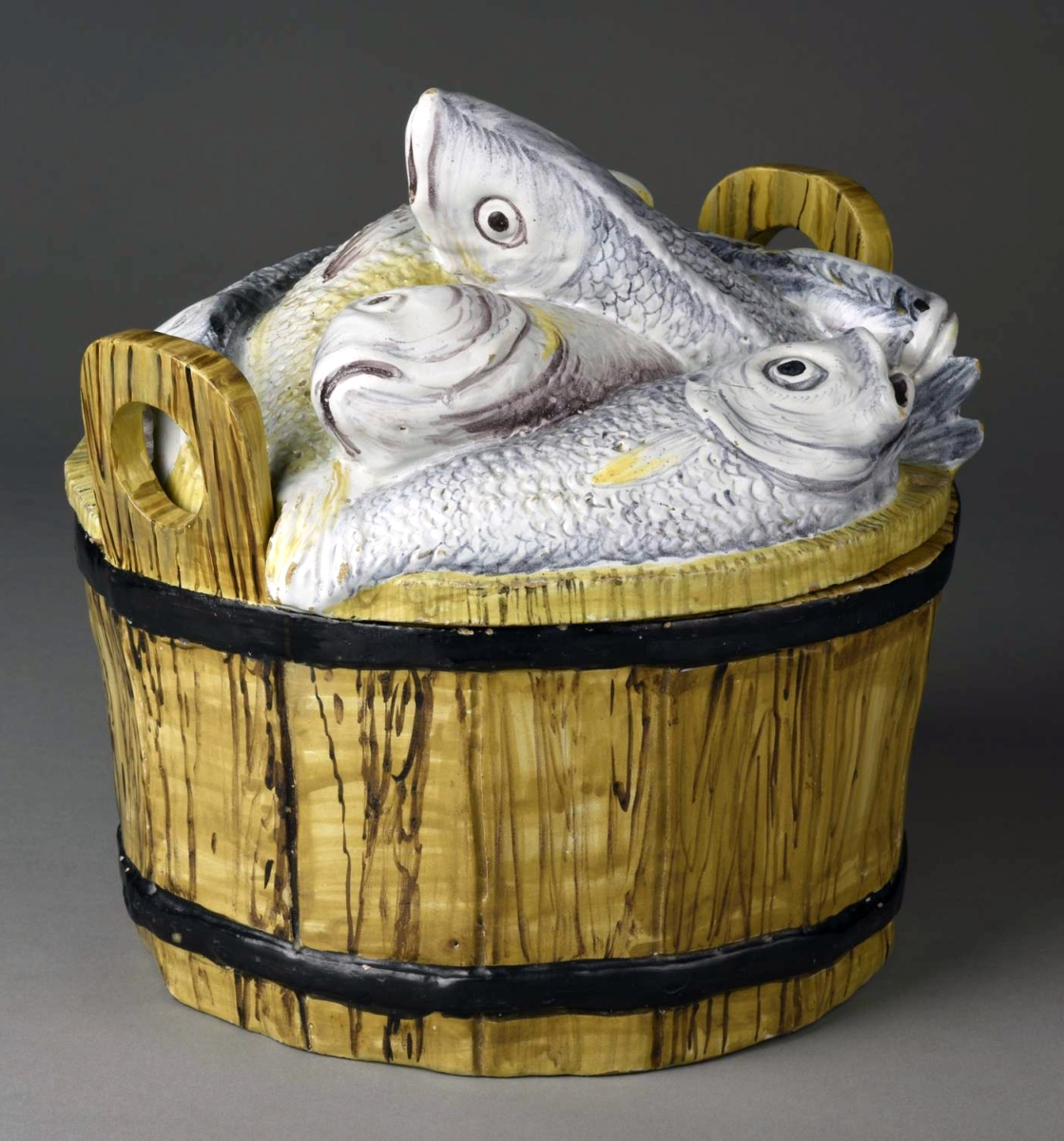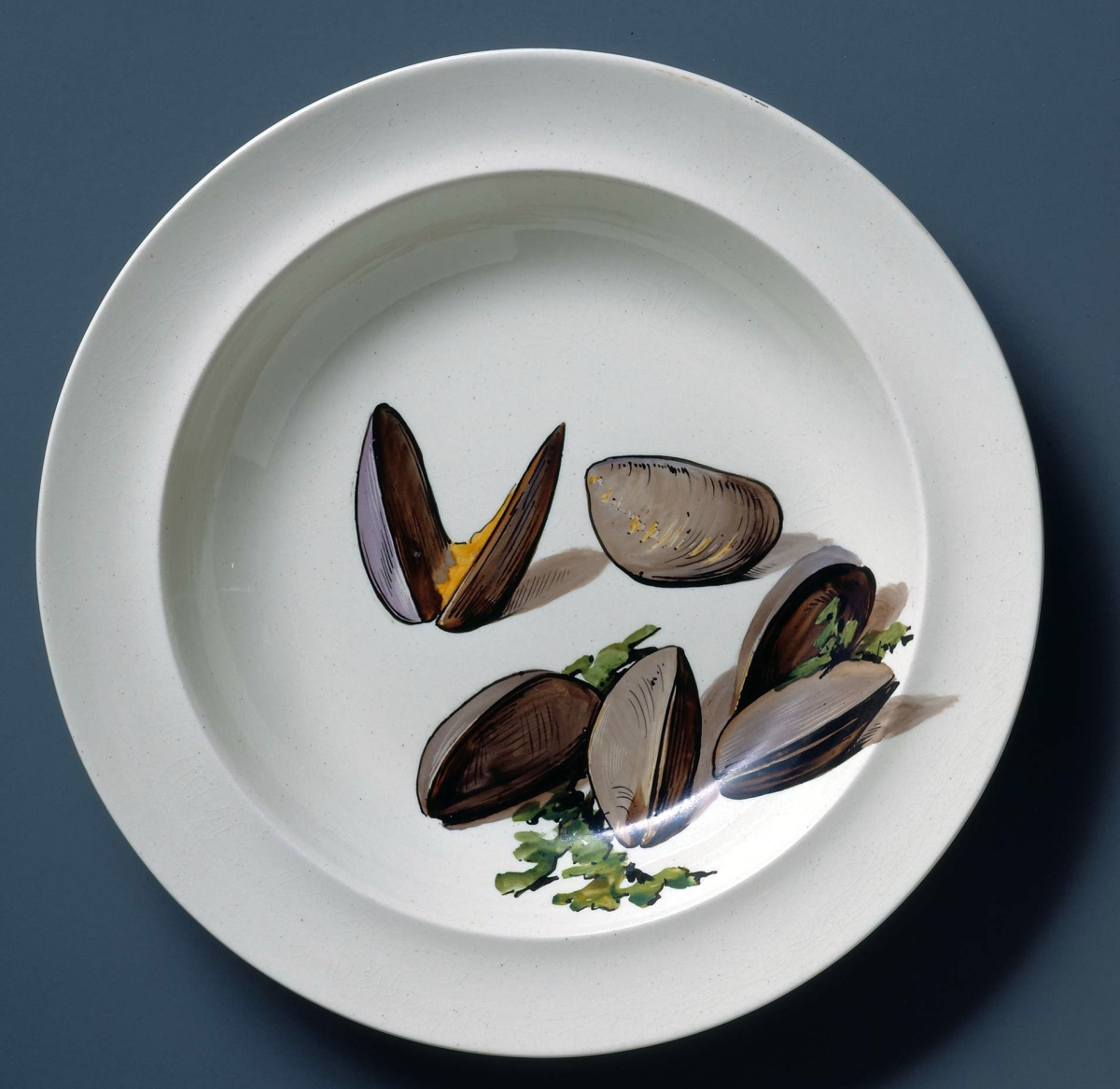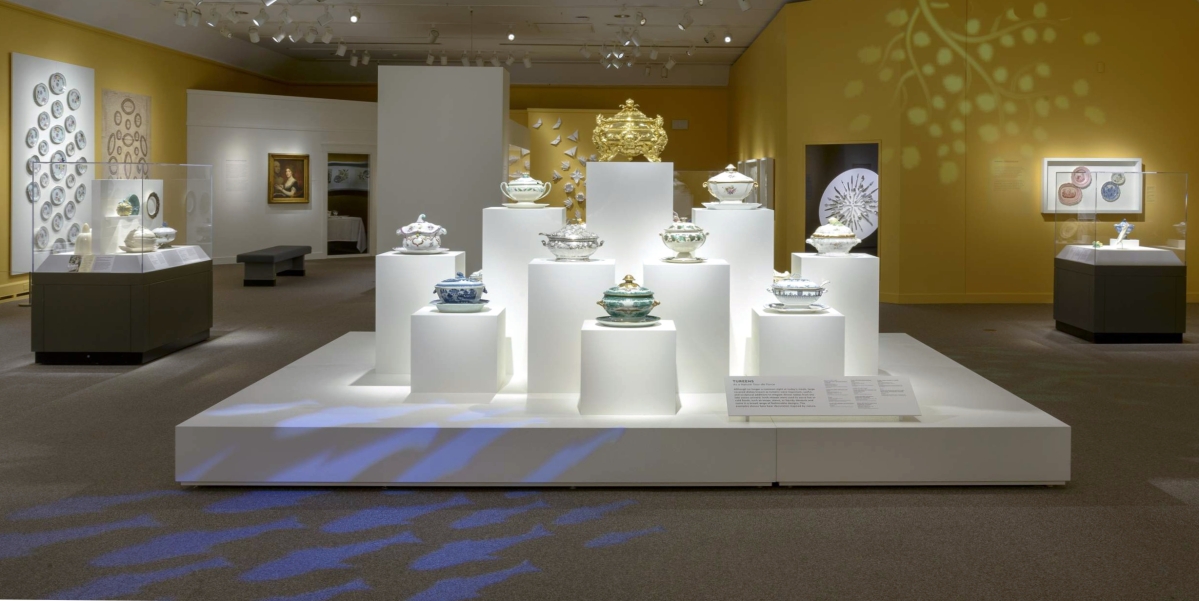By Karla Klein Albertson
WINTERTHUR, DEL. – The moving spirit behind “Dining by Design,” a major exhibition at the Winterthur Museum through January 6, was to celebrate “how hosts and hostesses brought the natural world into their dining rooms.” The visual link between diners and the greater world from which they gathered their food parallels human history. Examples can be cited from the Renaissance, medieval period and the ancient world. The sea-bound Minoan culture decorated storage vessels with growing plants and the marine life that formed their diet. The concept surely dates back to the first prehistoric man who painted an image of what’s-for-supper on the cave wall next to his favorite dining rock.
For this exhibition, Winterthur’s extensive permanent collection yielded around 550 objects owned by or promised as gifts to the museum. The time range stretches from Sixteenth Century examples to the present, for the popularity of flowers, animals and scenic views on dinnerware has never faded. Individual exhibits explore when, where and how pieces were used with the help of period instructions for the placement and deportments of serving vessels. Thus, a delicate creamware compote with a leaf and tendril border is paired with a page from the 1817 Wedgwood Etruria factory Shape Book illustrating a selection of different types. The museum was fortunate enough to be able to draw on perfectly suited inventory, such as the Campbell collection of soup tureens in the forms of flora and fauna.
The revelation for visitors is the imaginative and innovative way in which the vessels are displayed, which inspires new lines of thinking on nature at the table. Leslie Grigsby, senior curator of ceramics and glass at Winterthur talked with Antiques and The Arts Weekly about the creative process behind the show: “I was basically given the assignment of coming up with an exhibition that would celebrate our collection but also would be a surprise to the audience. Then, folks who have been here many times would see something they would enjoy and immediately feel at home with, while at the same time new visitors would be enticed to come. We wanted a dramatically different look, and I ended up deciding to go with some inspiration from contemporary art installations.”
She continued, “We see it as big groups of objects that lead you from one area to another. The individual pieces are important, but they say more as a kind of surprising combination of things. For example, we show you a mass of what it was like to go hunting or knives and forks in all of their variety – splashes of groups of objects.” In addition to the impressive wheel of utensils painted with natural themes, there is an eye-catching architectural grouping of tureens mounted on pillars of various heights just within the entrance to the exhibition. Since the opening, Grigsby said, “I try to go down there every day to see people and answer questions if they have them. The wonderful thing is that when they enter that doorway, where you can see that pyramid of tureens, they say, ‘wow, where should we go first?’ After they go through and look at the different groups of objects, they’re staying in the gallery. When asked about that, visitors said, ‘this is just so pleasant – there’s a sense of being outside when you’re inside.’ The whole aesthetic of the installation as well as the objects themselves seems to be enhancing the experience.”
Grigsby recounted the time-consuming process of assembling the objects for display: “I did bring out many pieces that haven’t been on view for quite a while. I was trying to avoid pillaging the 175 house rooms and the other galleries. And I wanted to show objects that visitors wouldn’t normally get to see. For one thing, that extensive dinner service that you see, it was drawn from a service of about 250 objects spread over nine floors in the museum. You’d see little clusters of them stacked together, but I went through that entire group and found examples that would match a particular mid-Eighteenth Century table plan that was from a cookbook by a woman named Elizabeth Raffald. It took us about a month and a half to get everything picked and find out if it was in good condition with matching enamel colors.”
The service the curator selected was Chinese export porcelain in what is known as the Saxon flower pattern, 1760-80. The pieces are mounted on the wall in replication of an enlarged illustration of “1st Course” from Raffald’s The Experienced English Housekeeper, a practical picture guide published in Manchester in 1769. Housekeepers never merely settled on, “Oh, that looks pretty.” There was a seating plan and an eating plan for every occasion. The majority of the pieces displayed are from England, European countries and China. For wealthy and middle-income families, imported dinnerware was the standard until the approach of the Twentieth Century. A long list of presidents favored French porcelain for the White House table. Ulysses S. Grant used Haviland, but he also ordered Chinese export porcelain, including the fish-pattern plate in the exhibition. Even with the hazardous sea voyage and lengthy turnaround time, economics favored imports.
A few of the animal examples are very much post-nature, for the subject is portrayed deceased and prepared for supper. Grigsby noted, “I do love the boar’s head tureen, and, in fact, it’s pretty gruesome. We wouldn’t want it on today’s table. The stand has a little sheaf of arrows and big long knife that would have been used for beheading it. It’s so wonderfully horrible that I find it pretty irresistible – when you put the hot stew in, steam would have come out of the nose.” The example in question was made at the Chelsea Porcelain Manufactory in London, 1750-60, and belongs to the Campbell collection given by John T. Dorrance Jr in 1996. The object is paired with The Encyclopaedia of Practical Cookery, published in Philadelphia around 1898, where four pages are devoted to preparing your boar for a meal.
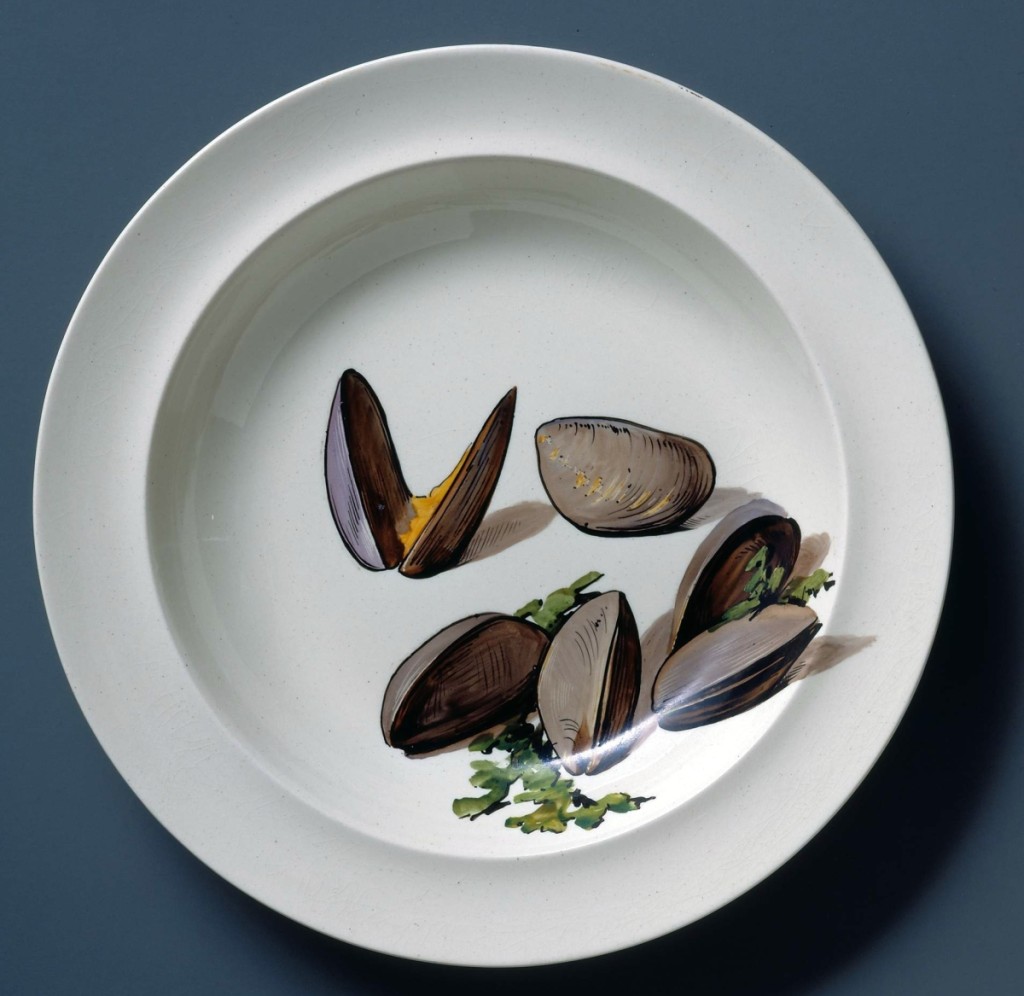
Earthenware (creamware) soup plate portraying mussels, Wedgwood Etruria Factory, Staffordshire, England, 1870–72. Campbell Collection of Soup Tureens at Winterthur.
While elaborate tureens and services hand painted with flowers and bees could only be purchased by the upper classes, techniques for decoration that arose in the Nineteenth Century, such as transfer-printing, made domestic and exotic themes from nature affordable for the middle classes. Grigsby explained, “You could say something about your understanding of the world by bringing in a set of transfer-printed ware with pink imagery showing views of the London zoo or birds and flowers identified on the back. It was a way to show your taste, but cheaper than buying a sculpture or a painting. The Clews, Wood and Adams factories in Staffordshire enjoyed great success selling Americans sets of earthenware printed with scenic views of their own landscape. Householders who had never seen Niagara Falls in person could buy plates for the table with the dramatic image under the entree.
Grigsby concluded, “I’ve been giving lectures based on how the exhibition was created, because it was done in such a different way. For example, if you look at that nature scene made of soup tureens, I really wanted to create the sense of the outdoors being brought inside, and this was a novel way to show that theme. So, the lectures I’ve been doing so far are about what we went through to try and create what I hope looks like a carefree and easy display, but one which took many months and over 50 people to accomplish. One thing that inspired the show, and my choice of ‘nature’ as the design aspect, is that Winterthur also has an exhibition out in the gardens about follies. I thought it would be nice to do an interplay of indoors and outdoors at Winterthur. The theme just demanded that I pursue it.”
Winterthur Museum, Garden and Library is at 5105 Kennett Pike. For information, www.winterthur.org or 302-888-4600.
Journalist Karla Klein Albertson writes about decorative arts and design.

